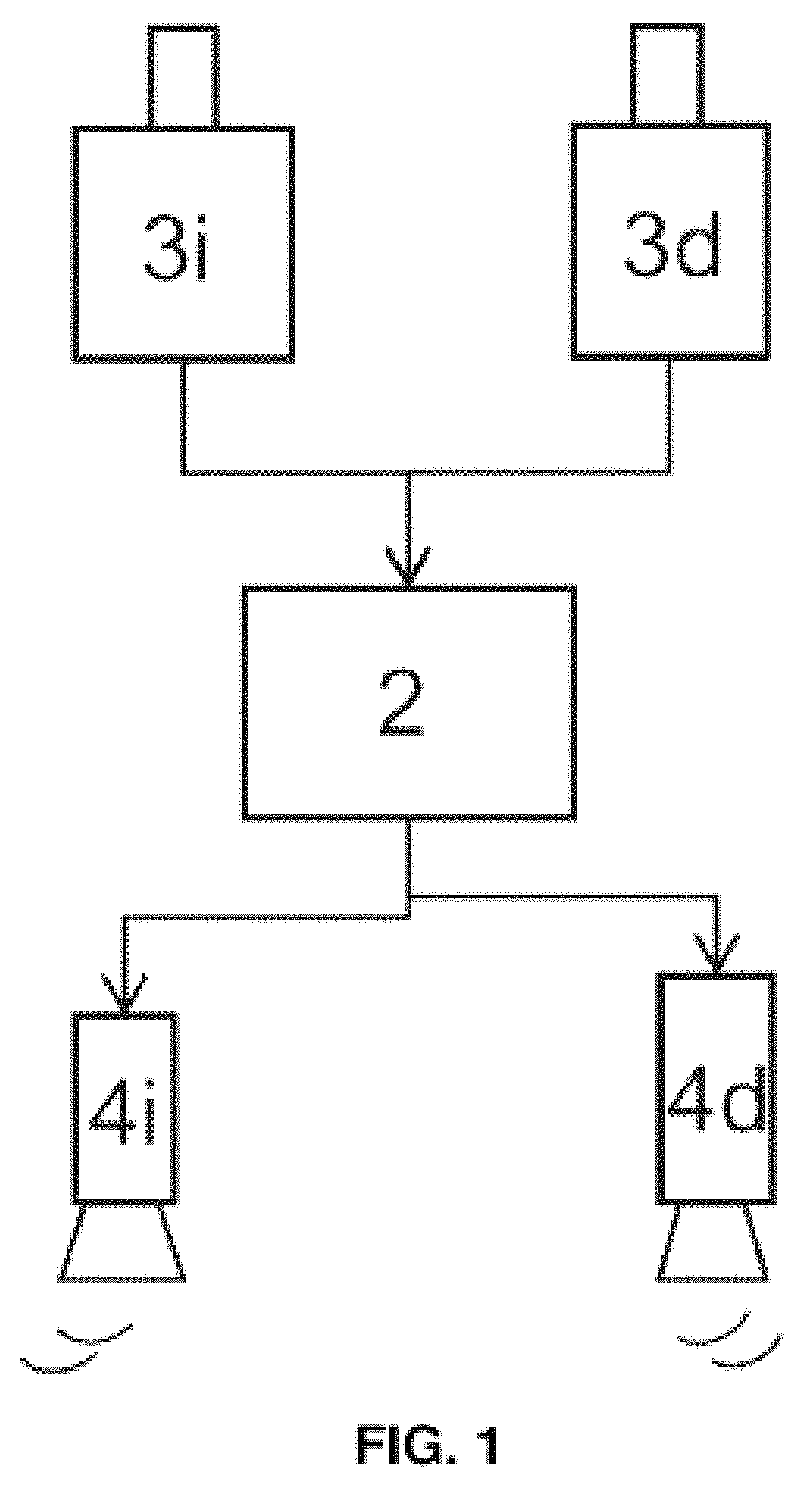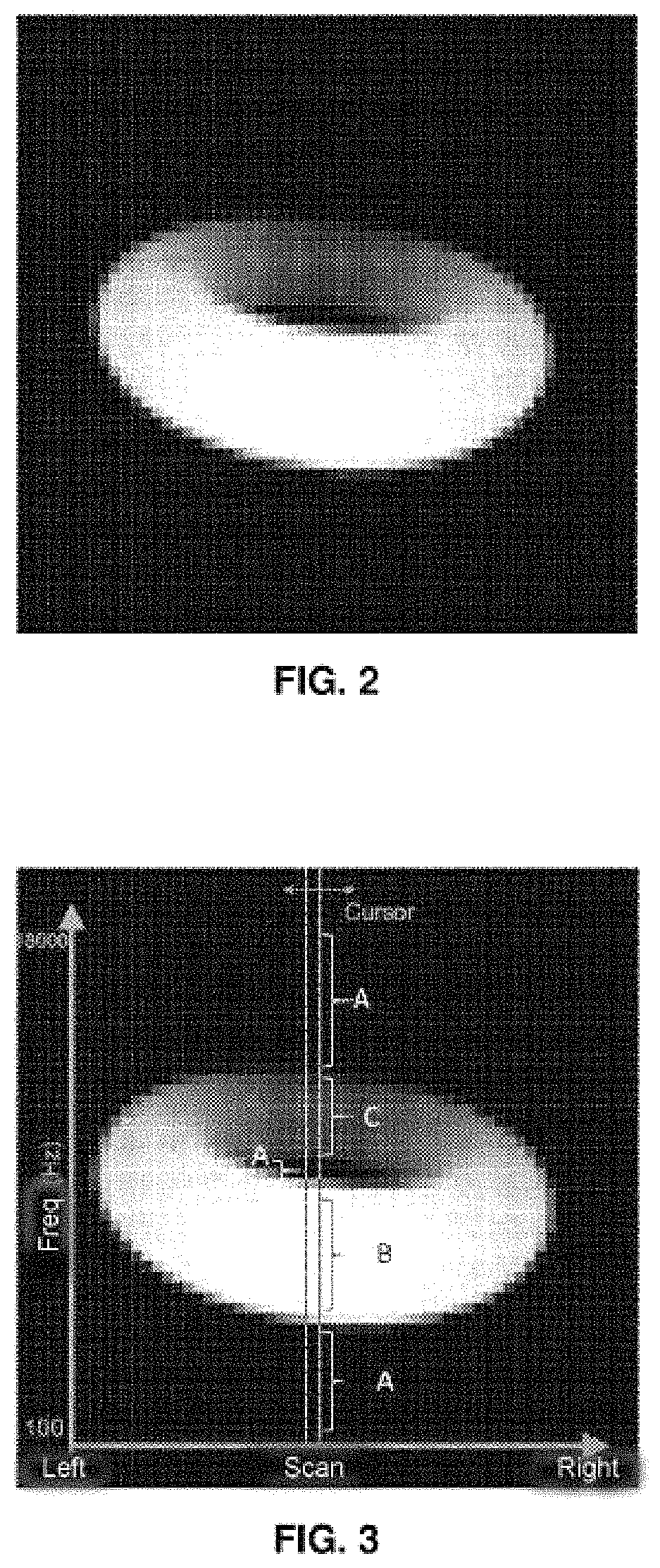Portable system that allows blind or visually impaired persons to interpret the surrounding environment by sound and touch
a portable system and sound technology, applied in the direction of tactile signalling system, image enhancement, instruments, etc., can solve the problems of not providing a volumetric analysis of the scene, invasive and difficult to handle, and are usually too expensive for their use to be anything more than exclusive, so as to achieve the effect of being readily recognized
- Summary
- Abstract
- Description
- Claims
- Application Information
AI Technical Summary
Benefits of technology
Problems solved by technology
Method used
Image
Examples
example
[0062]This example is provided to clarify how sound is generated from the depth image. It is assumed that the scan mode has been selected and that a depth image like that shown in FIG. 3, where only three levels of gray are distinguished as an approximation, has been obtained. Therefore, in the central column there are (from bottom to top): 10 black pixels, 12 white pixels, 2 black pixels, 8 gray pixels and 15 black pixels. It is assumed that a color scale is established, 0 dB being assigned to white, −30 dB being assigned to gray and −∞ dB being assigned to black.
[0063]The strength of the signal at that moment in time would be the analog mix of all the signals.
[0064]The user would notice different frequencies according to the position of the pixel in height. The pixels that are at a lower height are lower pitched, and the pixels that are at a greater height are higher pitched. The sound generated by this column can be divided into a low pitch component with a high sound intensity (...
PUM
 Login to View More
Login to View More Abstract
Description
Claims
Application Information
 Login to View More
Login to View More - R&D
- Intellectual Property
- Life Sciences
- Materials
- Tech Scout
- Unparalleled Data Quality
- Higher Quality Content
- 60% Fewer Hallucinations
Browse by: Latest US Patents, China's latest patents, Technical Efficacy Thesaurus, Application Domain, Technology Topic, Popular Technical Reports.
© 2025 PatSnap. All rights reserved.Legal|Privacy policy|Modern Slavery Act Transparency Statement|Sitemap|About US| Contact US: help@patsnap.com



